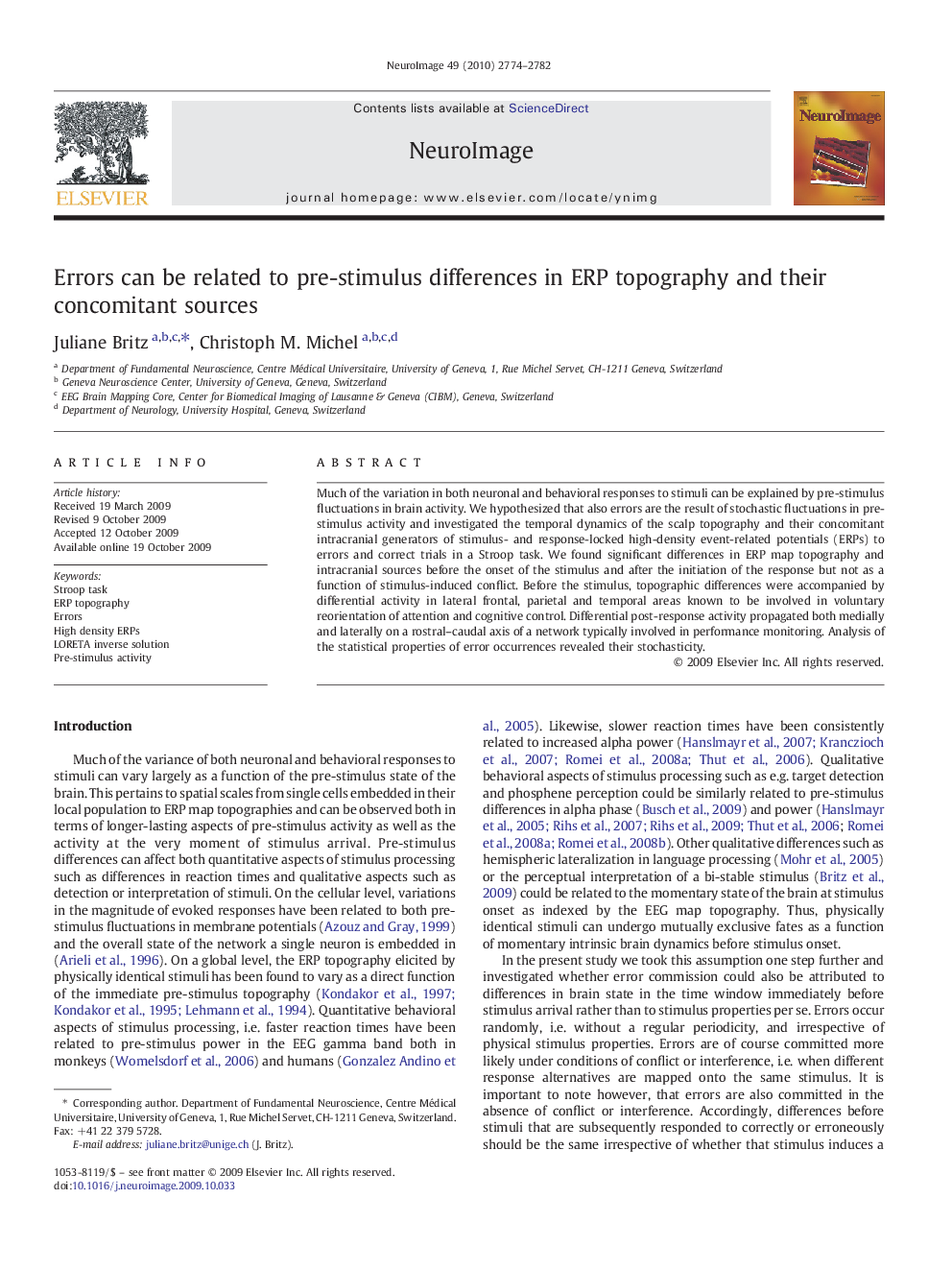| Article ID | Journal | Published Year | Pages | File Type |
|---|---|---|---|---|
| 6037165 | NeuroImage | 2010 | 9 Pages |
Abstract
Much of the variation in both neuronal and behavioral responses to stimuli can be explained by pre-stimulus fluctuations in brain activity. We hypothesized that also errors are the result of stochastic fluctuations in pre-stimulus activity and investigated the temporal dynamics of the scalp topography and their concomitant intracranial generators of stimulus- and response-locked high-density event-related potentials (ERPs) to errors and correct trials in a Stroop task. We found significant differences in ERP map topography and intracranial sources before the onset of the stimulus and after the initiation of the response but not as a function of stimulus-induced conflict. Before the stimulus, topographic differences were accompanied by differential activity in lateral frontal, parietal and temporal areas known to be involved in voluntary reorientation of attention and cognitive control. Differential post-response activity propagated both medially and laterally on a rostral-caudal axis of a network typically involved in performance monitoring. Analysis of the statistical properties of error occurrences revealed their stochasticity.
Related Topics
Life Sciences
Neuroscience
Cognitive Neuroscience
Authors
Juliane Britz, Christoph M. Michel,
